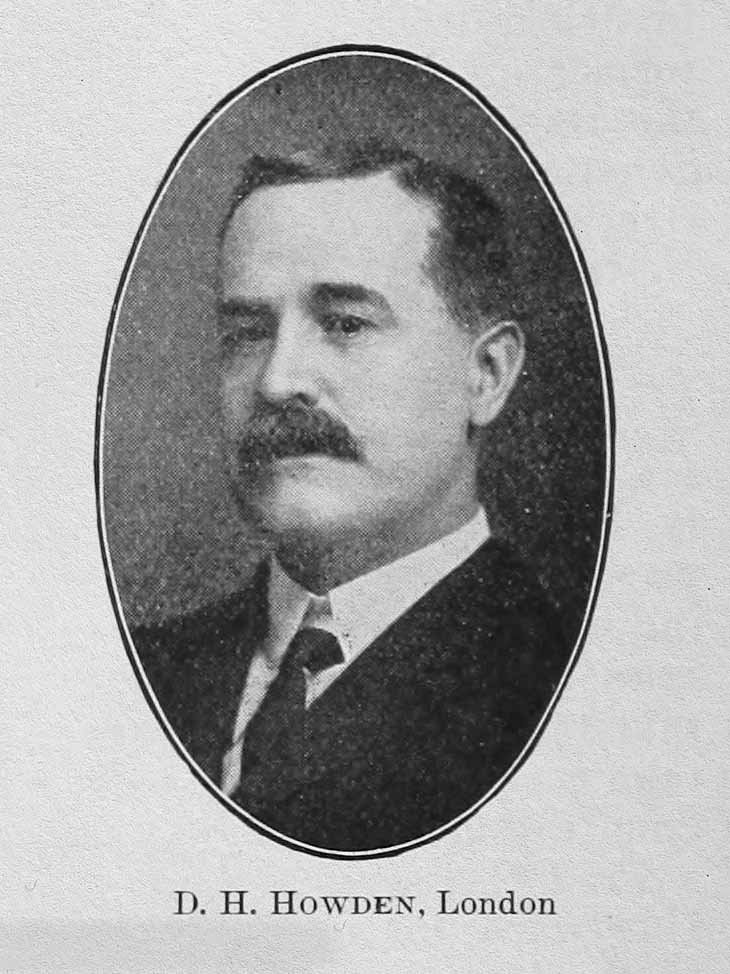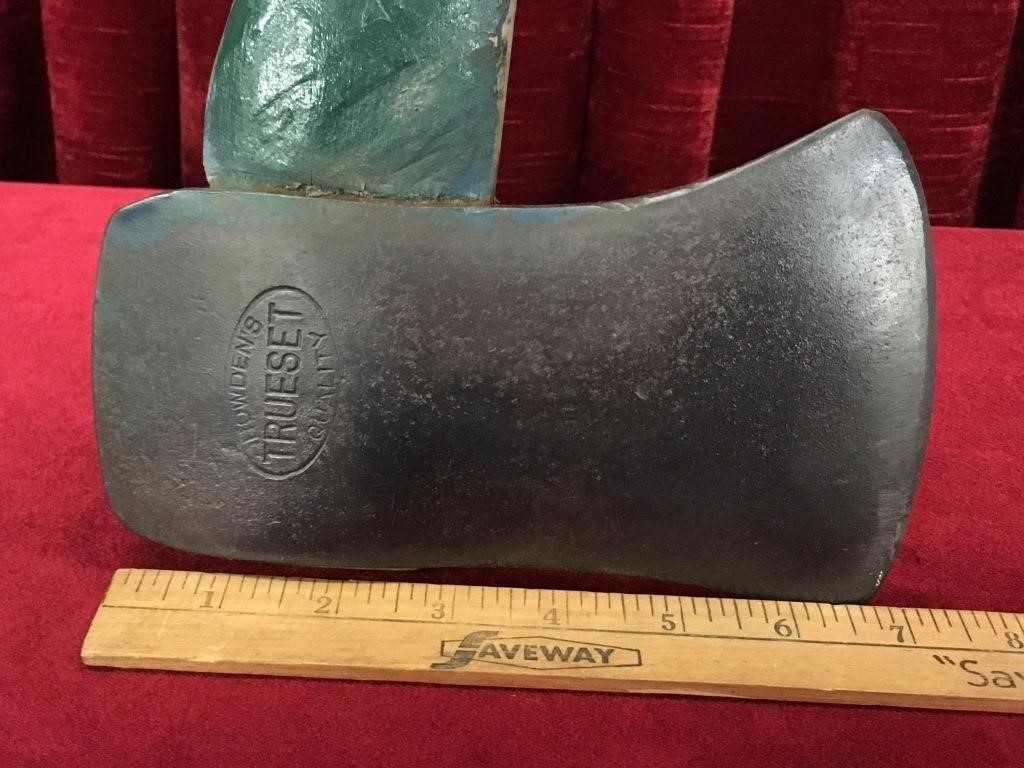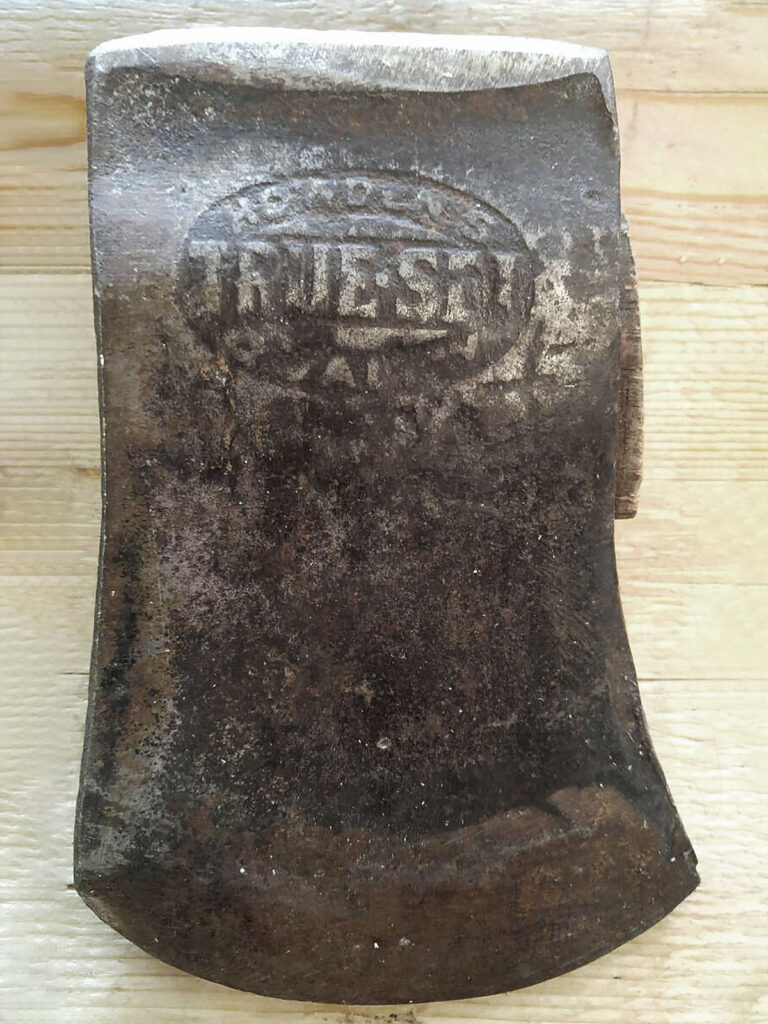Howden’s Trueset Axes
1910* – 1950*
London, Ontario
(Made in St. Catherines)
D. H. Howden & Co. was a Canadian hardware business founded in London, Ontario in 1901. The company swiftly expanded, diversifying its offerings and achieving nationwide growth. In 1987, the company sold to the Quebec firm Sodisco. Sodisco-Howden operated until 2004 when it was purchased in turn.
In the early 1900s, axes were big business, and all the large Canadian hardware retailers and wholesalers started to launch their own private-label axe brands around 1910 (give or take a couple of years). We don’t currently have a start date for Howden axes, but it’s a fairly safe assumption they started around this time as well or at the latest by the early 1920s.
The Howden axes were produced at the famous Welland Vale factory in St. Catherines, Ontario (as were many of their competitors).
I’m looking for better images of these axes – if you have one and are willing to share pictures, please email museum@axeandtool.com
Early Etched Trueset axe
The early Howden axes showcased a rather large and impressive etched design, which is quite uncommon for Canadian-made axes.
This may have been to compete with the Howland Samson axe, a Toronto-based competitor with their own impressive etched axe.
Etched axes stopped being produced around 1930, as the axe industry stalled and margins got tighter.
Later Stamped Trueset Axe
The more common oval-stamped axe logo (shown at the top of the article) can be dated to the early 1930s, probably up to the 40s or 50s, when the continued collapse of the axe industry made it unprofitable for hardware stores to continue with their own brand of axes.
A Brief History of D. H. Howden Hardware

In 1889 David Hartford Howden joined Bowman Hardware Co. in London, Ontario as the head buyer and later general manager. The company faced financial difficulties leading Howden and three colleagues to form their own wholesale hardware firm, opening D. H. Howden and Co. in 1901.
Following Howden’s death in 1916, his son Norman took over, overseeing substantial sales in southwestern Ontario.
The company expanded into Toronto, acquiring Kennedy Hardware in 1922. In 1931 they acquired a major competitor H. S. Howland and Co. Ltd. when the city of Toronto expropriated their Front St. property for road and infrastructure development.
Interestingly, Howdens continued to operate both hardware brands simultaneously out of a single office, even going as far as to combine both brands within a single catalog in 1950 (Howland on the left pages, Howden on the right).
Apparently, Norman Howden’s lavish lifestyle almost led the company to bankruptcy. But after his death in 1937, a combined effort of Howden family members revived the business post-1945. They diversified into sporting goods and electrical supplies and sold directly to contractors.
In 1954, the company went public, and in 1963, it acquired the rights to franchise Pro Hardware stores in certain Canadian markets, eventually expanding nationwide. The company was listed on the Toronto Stock Exchange in 1968. In 1987, the business was sold to Sodisco of Quebec.
Sodisco-Howden Group Inc. continued until it was purchased in 2004 by the Vancouver-based CanWel Building Materials Ltd. CanWel was in turn purchased by the TIM-BR Mart Group in 2010.
Help the site grow!
Did I get something wrong? Do you have one of these axes? Please share any pictures, information, or insights to help fill the archive. You can email: museum@axeandtool.com
Sources
- British North America Philatelic Society – Illustrated Advertising Postal Stationery cards of Canada, Chris Ellis
- Canadian Axe Manufacturers and Purveyors – Thomas C. Lamond
- Thomas Fischer Rare Book Library, University of Toronto
– Hardware & Metal, Nov 1912 - CanWel Building Materials
- CBC Buisiness
- Lumber and Building Materials Association of Ontario – E News


